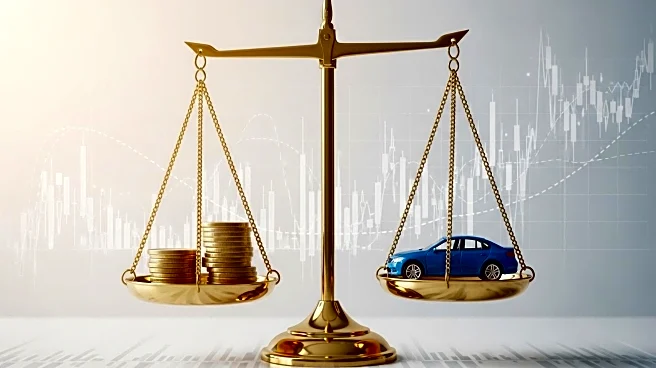What's Happening?
The automotive industry is experiencing a 'K-shaped' economic trend, with new vehicle prices surpassing $50,000 for the first time, according to Cox Automotive's Kelley Blue Book. This price surge contrasts with rising auto loan delinquency rates, particularly among consumers with low credit ratings. Wealthier households continue to drive the market, benefiting from favorable loan rates and capital access, while price-conscious buyers opt for used vehicles or remain sidelined. The disparity highlights the economic challenges faced by lower-income consumers amid inflation and tighter budgets.
Why It's Important?
The divergence in the automotive market underscores broader economic inequalities exacerbated by the pandemic. Wealthier consumers enjoy advantages such as rising home values and stock market gains, while lower-income individuals struggle with affordability issues and high loan rates. The increasing auto loan delinquencies among subprime borrowers reflect financial stress and potential risks to the broader economy. This situation raises concerns about consumer spending and economic stability, as the automotive sector plays a significant role in the U.S. economy.
What's Next?
Economists and industry analysts will continue to monitor the automotive market for signs of further economic divergence. The potential for a trade war with China and ongoing affordability concerns may impact consumer behavior and market dynamics. Policymakers may need to address these disparities to ensure economic inclusivity and stability. As the market evolves, stakeholders will assess the implications of rising vehicle prices and loan delinquencies on consumer confidence and economic growth.
Beyond the Headlines
The 'K-shaped' economic trend in the automotive industry reflects broader societal challenges, including income inequality and access to financial resources. The disparity in consumer experiences highlights the need for targeted policies to support lower-income households and promote economic equity. The automotive market serves as a microcosm of the larger economic landscape, offering insights into the challenges and opportunities facing different consumer segments.













